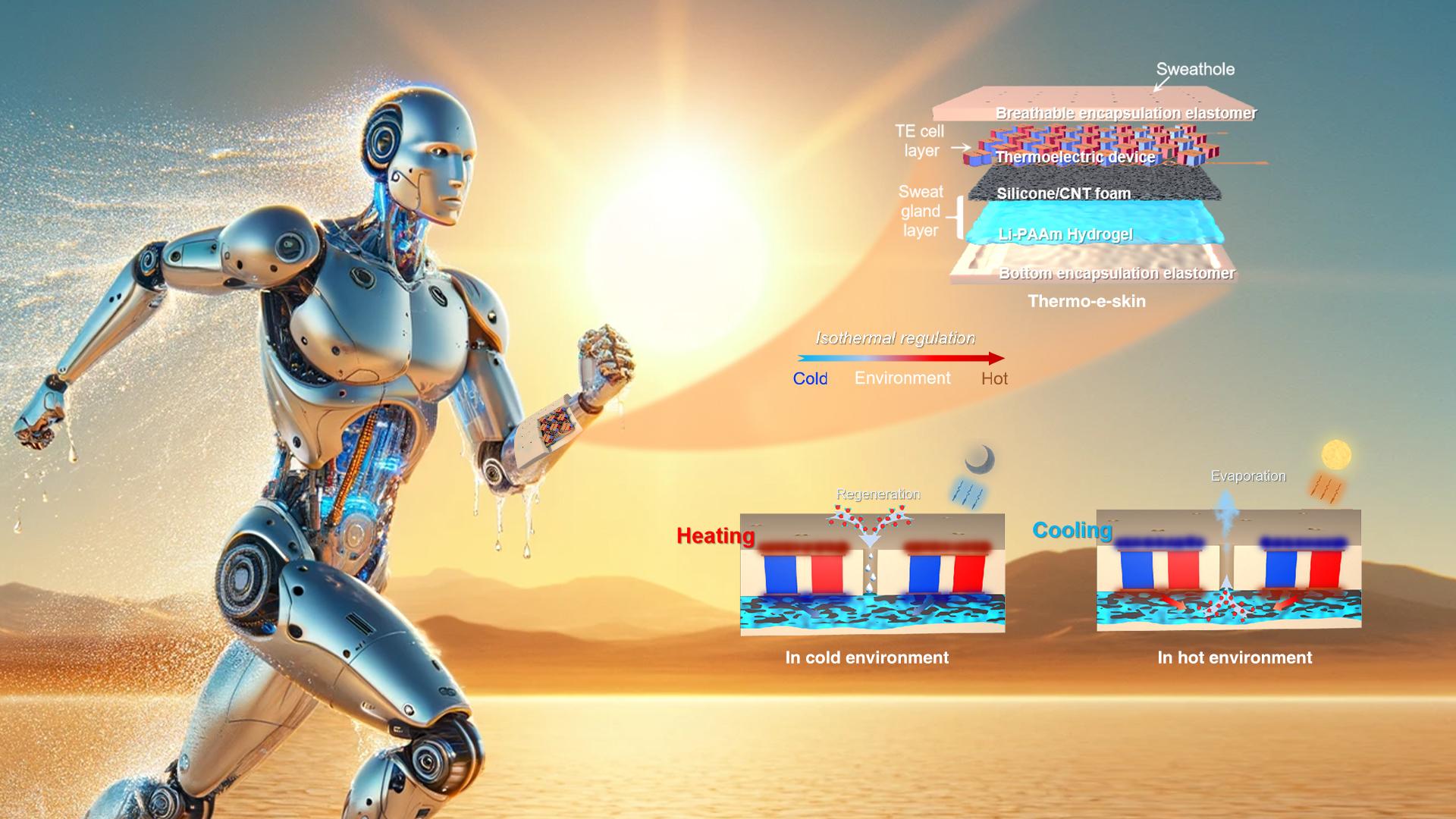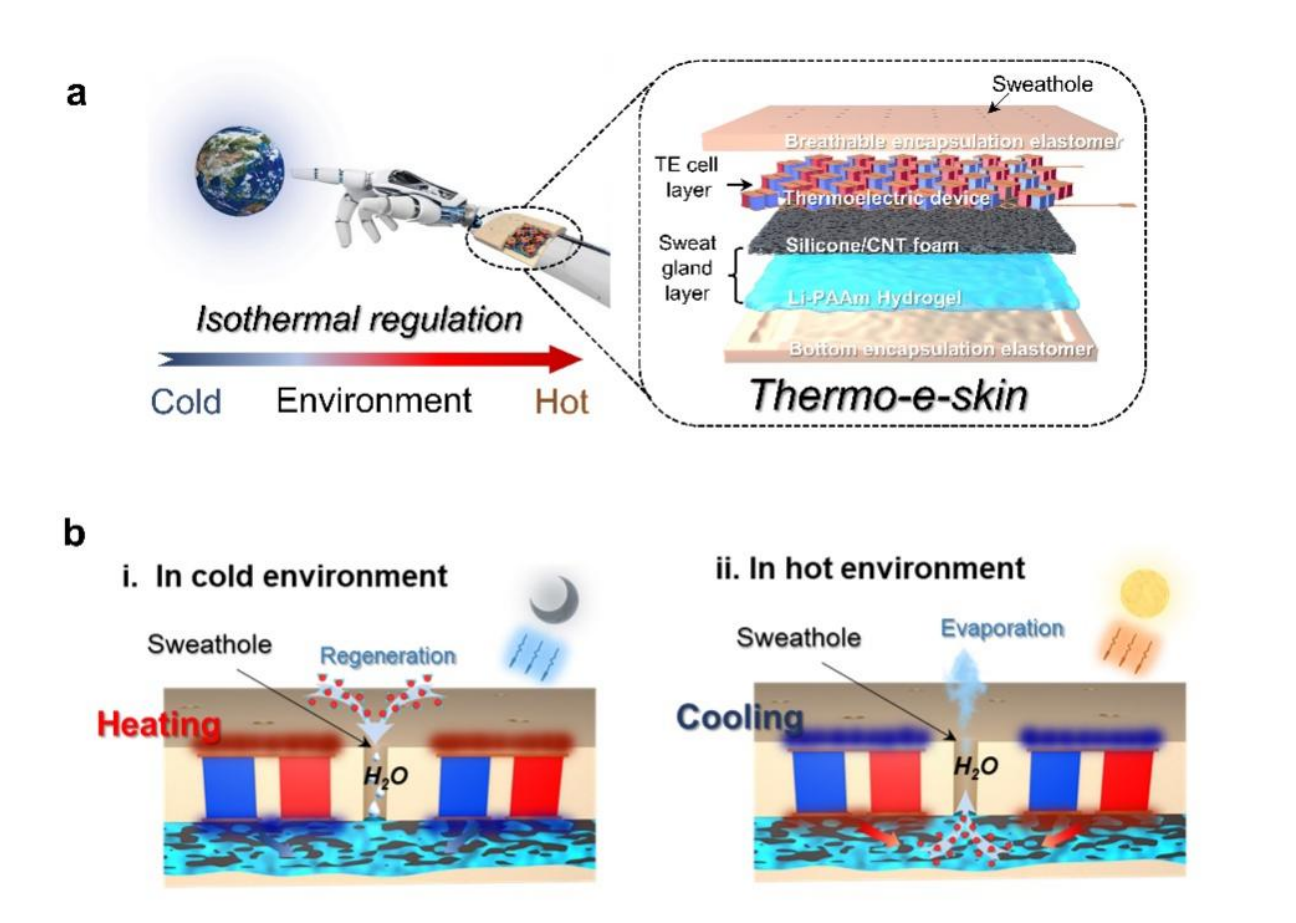Electronic skin (e-skin), as the counterpart of human skin, can simulate various functions of human skin by integrating various functional elements on a flexible substrate. It is an ideal component for future intelligent robots. Currently, e-skin has achieved tactile functions similar to human skin and has formed stable neural feedback to different degrees by imitating the human body. However, the thermoregulation function of e-skin, which imitates the human body, is still limited to simple heating or cooling and cannot maintain isothermal regulation in complex and changing environments for a long time.
E-skin without an isothermal regulation function can not only pose risks to users but also lead to adverse psychological consequences. On the other hand, e-skin with isothermal regulation function can change the temperature attributes of prosthetics or robots, cooling in high-temperature environments and heating in low-temperature environments, thereby maintaining a constant surface temperature like the human body in different environments. This can significantly improve the comfort of prosthetic users and the intelligence of robots.

Professor Weishu Liu’s research group from the Department of Materials Science and Engineering at the Southern University of Science and Technology (SUSTech) has made new progress in the field of thermoregulation biomimicry of electronic skin.
Their work, entitled “Electronic skin with biomimetic structures realizes excellent isothermal regulation”, has been published in the high-level comprehensive journal Nano Energy, hosted by Elsevier.

Figure 1. Isothermal regulation mechanism of thermo-e-skin
The researchers successfully replicated the isothermal regulation mechanism of the human body and developed a thermoregulating e-skin (thermo-e-skin) with biomimetic structures for long-term isothermal regulation. The combination of a flexible thermoelectric device and hygroscopic hydrogel composite achieved an effective balance between heat generation and dissipation, fundamentally changing the temperature behavior of traditional e-skin.
The thermo-e-skin demonstrated the ability to maintain a surface temperature in the comfortable temperature range of 35°C within a wide environmental temperature range of 10-45°C. Furthermore, the addition of a biomimetic sweat gland layer greatly improved the effective time of isothermal regulation in different environments, reaching 4.5 hours at an environmental temperature of 25°C and 4.2 hours at an environmental temperature of 40°C. At the same time, the hygroscopic property of the hydrogel allows the thermo-e-skin to regenerate water from the atmosphere after isothermal regulation, and it can recover to its original state in just 4 hours at a humidity of 90%, demonstrating its ability for cyclic use.
This biomimetic thermo-e-skin demonstrates practical isothermal regulation capabilities, providing valuable insights for mimicking human body temperature regulation and offering a solution for biomimetic thermal sensing applications in robots.

Figure 2. Isothermal regulation of thermo-e-skin in different environmental temperatures
Pengxiang Zhang, a joint Ph.D. student in Prof. Liu’s research group at SUSTech and Hong Kong Polytechnic University (PolyU), is the first author of the paper. Prof. Weishu Liu from SUSTech and Prof. Zijian Zheng from PolyU are the corresponding authors. SUSTech and PolyU are the joint affiliated institutions.
Other contributors to this work included Prof. Bo Li, Zhiqian Li, Yupeng Wang, Wenting Sun, Kang Zhu, and Qikai Li of Prof. Weishu Liu’s research group, and Prof. Ke Wang and Zeru Wang from the School of System Design and Intelligent Manufacturing at SUSTech.
This study was supported by the Guangdong Innovative and Entrepreneurial Research Team Program, Shenzhen Innovation Program for Distinguished Young Scholars, PolyU, and RGC Senior Research Fellow Scheme.
Paper link: https://doi.org/10.1016/j.nanoen.2023.109189
To read all stories about SUSTech science, subscribe to the monthly SUSTech Newsletter.
Proofread ByYingying XIA
Photo ByDepartment of Materials Science and Engineering